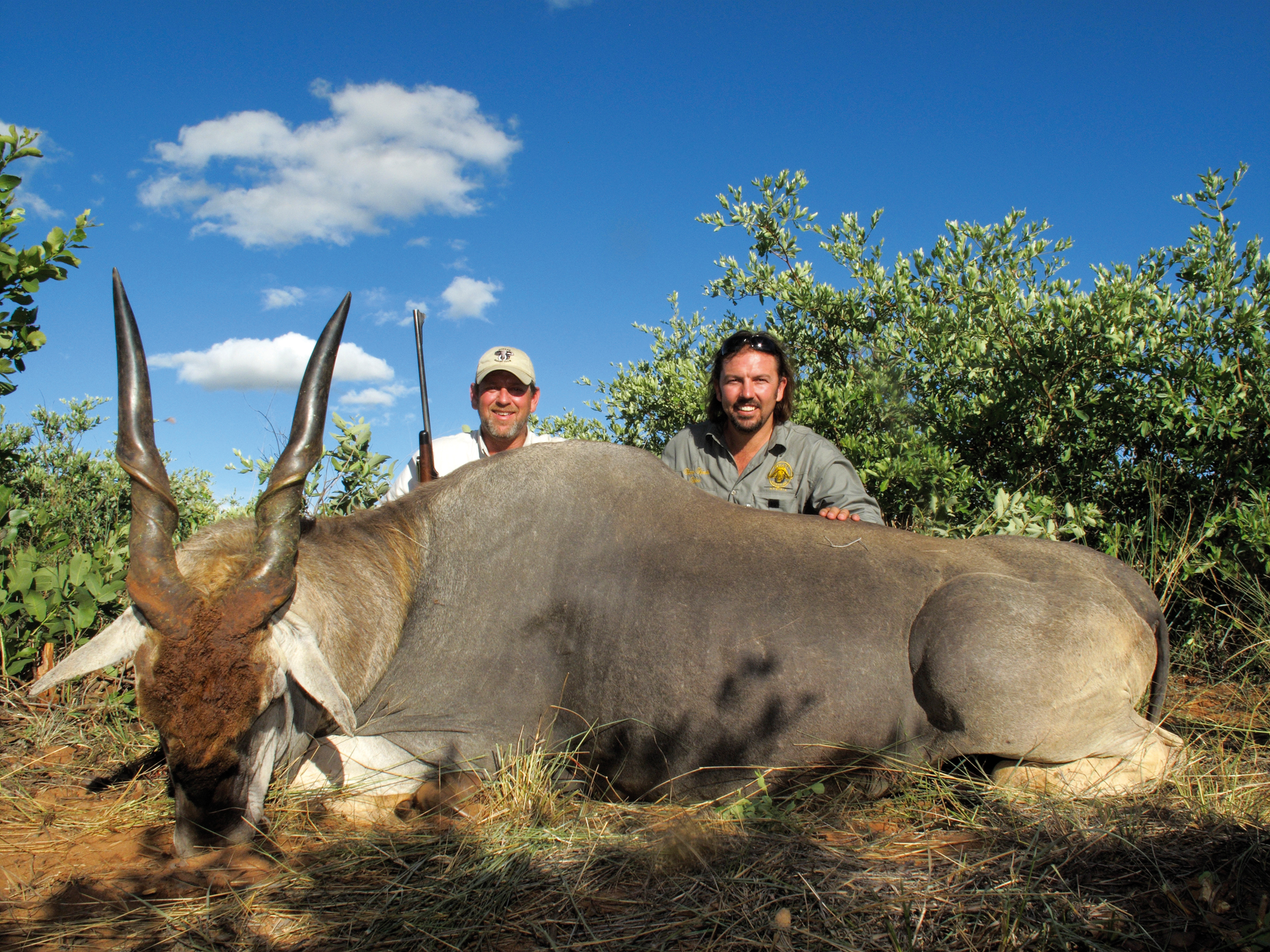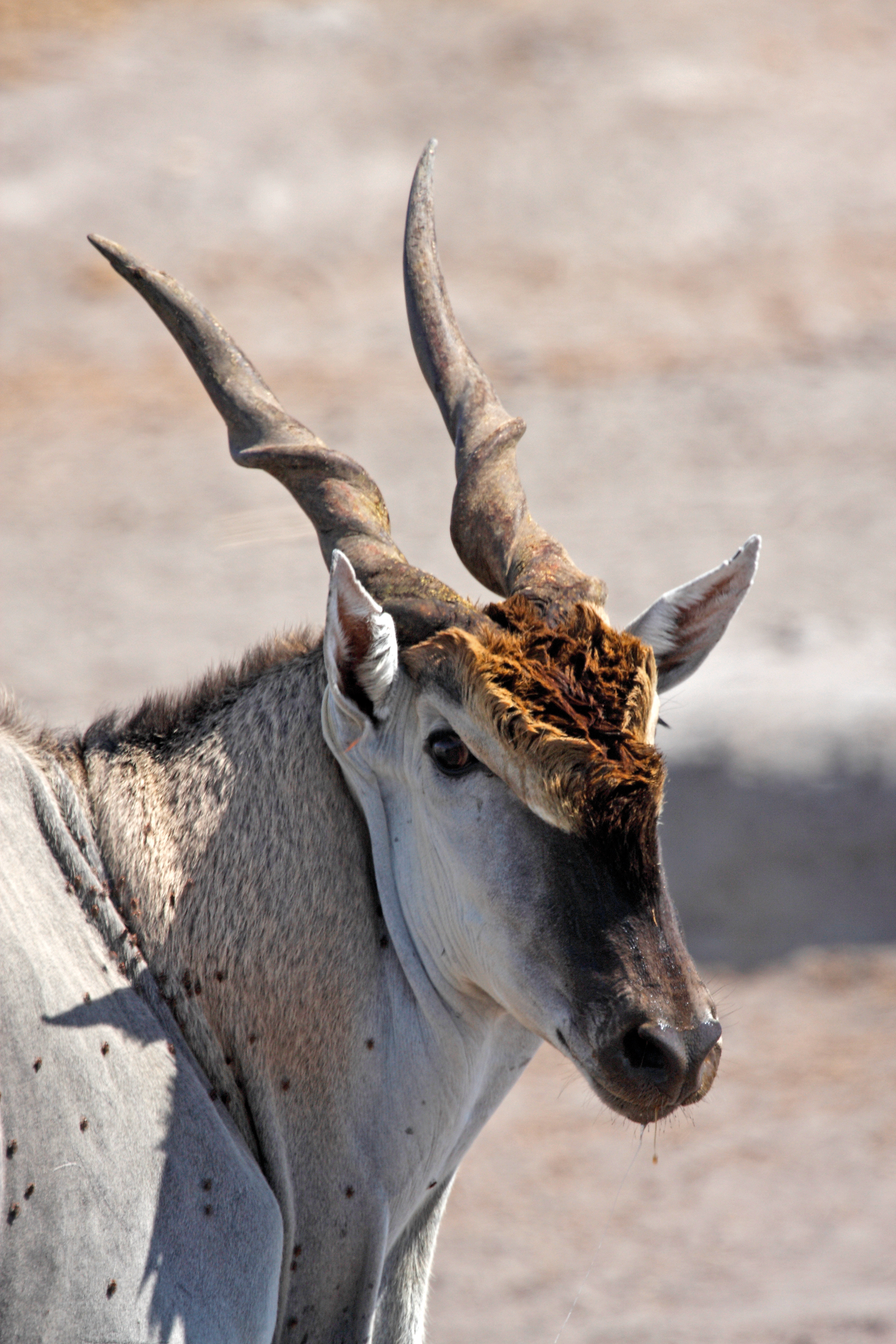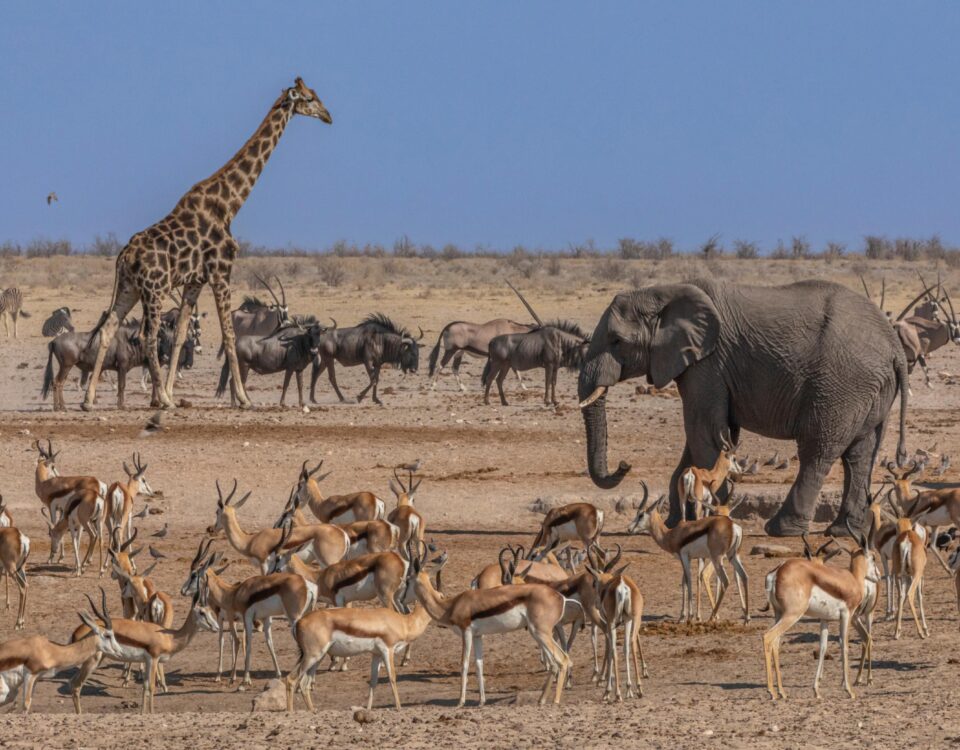
My first African adventure
July 6, 2016
Trophy hunting creates value for wildlife
July 11, 2016Tracking our spiral-horned quarry, my hunting assistant and I stopped at the same time. It is a rare pleasure, when – after spending days, weeks and years in the field with a hunting assistant – you become synchronised as one and can sense each other’s moves and body language.

The few minutes dragged on at an agonisingly slow pace. Was the bull coming closer, or was the knee click just more audible, because of our now subdued heartbeats and straining ears willing it to be louder? Mind games.
T wenty minutes earlier we were on the track of a huge eland bull. We were aware that he was skirting an enormous herd, but were hoping to catch a glimpse of him before he merged with the masses. The tracker and yours truly were in the lead, and the hunter and game scout in the rear. Seconds later the game scout came whizzing by. As he broke the 40-yard-dash record to the closest tree, I could just catch his terrified exclamation, “Rhino!”
I turned and looked at my client (name? Is this the Albert mentioned later?). “Follow them,” I instructed, and turned to try and see or hear from where the danger was coming. Our hunter ambled towards the tree, in which the tracker and game scout were already perched like early Christmas ornaments. “Up,” I instructed. Albert started climbing the tree, soon meeting up with the rear end of the tracker. The instruction “Up!” was repeated. Albert took his unloaded rifle and poked the tracker in the butt. Having the desired effect, the tracker accelerated up the fragile branches to the top of the not-so-large tree. We waited, all four of us hanging from a rather delicate branch. We heard snorting and the breaking of twigs, a final pooping, and then our hook-lipped attacker crashed past us and disappeared into the bush.
It took us a few minutes to regain our composure, climb down from the tree and continue our original pursuit.
We were walking along slowly when I had heard it. Motioning the client and game scout to freeze, I closed my eyes and slowly, in radar-like fashion, tuned into the unique sound that rather resembles taking two separate wood and metal blocks and bonding the two materials by slamming them into each other. You could mimic a similar sound, but nothing compares to the real thing. “Ping, ping, ping,” it went. Albert didn’t understand what we were hearing. The expression on his face changed from hot and bothered to one of puzzlement. He heard it too, but still didn’t recognise its significance. We located the direction from where the sound was coming. It seemed to be moving to the right, almost in our direction. So we also moved in that direction, sliding to the right to position ourselves in the natural ‘shooting lane’ that presented itself, stretching out in front of us for about 40 yards. The ‘blue’ eland bull was walking towards the dappled shade of a weeping wattle to our right, and we estimated it would pass within 20 to 30 yards from us.
The tension in the air was extreme, and our adrenal glands were subjected to yet another workout, although still somewhat depleted from the chase up the tree by the black rhino twenty minutes earlier.
With our safeties off, we were ready, waiting for the “Yes” or “No” command. We hadn’t seen the trophy yet. “Ping, ping – stop.”

THAT DISTINCTIVE ELAND CLICK
–––––––––––––––––––––––––––––––––––––––––––––––
The imposing eland bull warns rivals in a unique way – with loud clicks of his knee joints. With this clicking, male eland signal to rivals that have a distinct superiority. Danish researchers Jakob Bro-Jorgensen of the Zoological Society of London and Torben Dabelsteen of the University of Copenhagen observed this in Kenya, East Africa. The clicks are made by a tendon sliding/ slipping/ snapping over the bones of the legs when the eland moves.
Dr Bro-Jorgensen explains:
“The tendon in this case behaves like a string being plucked, and the frequency of the sound from a string correlates negatively with both its length and diameter. Thus, most importantly, the depth of the sound is predicted to increase with skeletal measures and can therefore be directly associated with body size.”
The bigger the animal, the louder the sound… It can be heard up to 100 metres away. The researchers then wondered why the clicking had developed through evolution. Fighting and injury is possibly evaded through this process.
Almost there. “Ping.” And into the opening stepped an old gentleman with a red tuft of hair perched punk-style and three inches thick on his forehead. His long, hairless grey-blue neck was outstretched, his dewlap was swinging back and forth, and a heavy burden of weight was pressing down on his round hooves. The stripes on his flanks were almost non-existent, leathery and balding.
“Don’t shoot!” I cautioned quietly. The hunter raised his head from behind the scope, “But I’m going to regret not having taken this shot.”
The bull was magnificent. It had everything we look for in an eland. In a straight-line measurement, his horns were worn down to less than 15 inches – short batons from years of wear. The bull froze, stiffening when he realised there were aliens in his environment. Then he turned away as if reading our minds, and ambled off imperviously on his mile-eating trot – mature eland bulls are unable to break into a full run due to their weight – and was gone.
We were exhilarated by this close encounter. It had become yet another memorable morning in Africa. There we were: soaked in sweat due to the sweltering heat, on this second-last day of the Namibian hunting season in late November. It was our last scheduled day of hunting for eland. “Lunch, a nap, and then we need to get back to it,” I told the hunting party.
After a light lunch in a setting overlooking a valley littered with red, fossilised sand-dune rocks and cumulous clouds swelling overhead, we once again took up the pursuit of our quarry. Late season in Namibia means the eland bulls have joined the breeding herds to compare their size and weight and test their intimidation abilities. This is an indication of large herds congregating. In areas where eland are abundant, you find herds of several hundred. And several hundred multiplied by two, gives you the number of eyes looking out for predators. In this case they were the prey, and they were looking out for us.
Spotting a large herd in thick bush, we casually passed them to a safe distance from which to make our approach. We travelled in a 180-degree circle from where we started, for the wind to be in our faces, and to be in front of the herd. Once in position, I climbed a weeping wattle to have a better vantage point. And then we waited. There were already a few young, dumb ones out in the open, but those with the experience of age were waiting in the shade for the midday heat to cool down to a more acceptable level. For more than an hour we just sat and watched. This was our last chance and we had to make good use of it.
As if a silent alarm had gone off, the thick bush in front of us suddenly became alive with movement as the animals moved out into the open. Our eyes darted backwards and forwards through the binoculars, overwhelmed by too many bodies, horns and colours –all in one frame. Concentration was key at this point. The angle of the approach would mean either success or failure. At its most basic level, hunting eland is the same as hunting Cape buffalo, up to the point where the shot goes off. With eland, the same indescribable hunting sensation at the climax of the experience – if it is a good shot, I have to add – is when the final coup de grâce is administered, and the danger is over.
Then suddenly an animal with a frame that was strikingly larger than those of the others emerged from the light tan, brown and red bodies. A dark grey animal with an almost black neck, a red tuft on the forehead and thick horns came ambling in our general direction. There were many bodies between us and the bull, and we knew we would have to move quickly and quietly, and that once in position, we would not have much time. Having chosen our line of approach and almost bent double at the waist, we walked and jogged as best we could in the thick Kalahari sand. Eland were feeding left and right.
We heard that by now familiar sound above the thumping of our hearts in our ears. Screeching to a halt, we dropped onto our knees and waited. The knee click came from the general direction we were expecting it. Easing up so as not to draw attention to our location, I glassed to try and get the bull in sight. There was nothing yet, just a wall of bodies. I then focussed on the shooting lanes available from our position. The shoulder-high rose-thorn bushes were sufficient cover, but were also annoyingly high enough to block an ethical shot. It is one thing to look for and find shooting lanes, but then your quarry must play along and step into those lanes. The few minutes dragged on at an agonisingly slow pace. Was the bull coming closer, or was the knee click just more audible, because of our now subdued heartbeats and straining ears willing it to be louder? Mind games. The young and dumb were off to our left and right, unaware of our proximity.
Then, like a ship emerging from a sea fog, all of a sudden, there he was… his head low, sniffing a cow to test her receptiveness. Moving from left to right, he was hopefully going to pass through one of the lanes. And this on our last day, our last hour, our last chance! He was a great old bull. His horns were worn. They would make a fine mount and the hunt would become a treasured memory.
Sticks up, the hunter slipped the .300 Winchester Magnum Mauser into position, with the safety catch off. This was it. The bull stepped into the lane, 40 yards away from us. A low “Hey!” instantly stopped him in his circular tracks. At the same instant the shot rang out. He jumped almost straight up into the air – 12 to 14 feet. To the naked eye it was clear that the shot was good. The crash of the bushes where he fell could be heard above the eruption of the rest of the herd fleeing the scene. The disturbance was short-lived as the animals stopped running after a 100 yards, and calmly started feeding again.
“HE IS A LITTLE DEAF… AND YOU’RE A LITTLE LOUD.”
Ernest Hemingway
––––––––––––––––––––––––––––––––––––––––––––––––––––––––––––––––––––––––––
When walking into a room full of hunters, I’m often amused that their voices are clearly those of ‘sun-darkened dugga boy PHs’, which means the general noise level is several decibels higher than that of a similar-sized group of non-hunters.
Early in my professional hunting career I decided to start looking after my hearing. This has saved my hide several times – from leopard charges, a spotted hyaena sticking its nose inquisitively into a leopard blind, hearing an elephant approaching through thick bush and getting out of the way of a charging black rhino, to name a few narrow escapes. Like the animals we prey upon, hunters too use their senses in a heightened state while hunting, through sight, smell, sensing the wind direction with exposed skin (and yes, wearing shorts helps in this regard), and listening carefully for the slightest movement when you’re close to your prey.
There is nothing like a final approach: stalking quietly; being able to smell and hear wild creatures in their element while knowing you are there; hearing the grass part as they move, and at the same time hearing them breathe.
I used to wear moulded earplugs, but have recently upgraded to proper hearing protection. It has really saved my hearing and my hide, and enhanced my hunting efficiency. I am able to hear everything within 50 yards while hunting, and give and hear questions in the adrenaline-filled moments before my hunters take a shot. Thus I have my hands free to assist the shooter or watch the targeted animal through my binoculars, with my rifle ready, should things go wrong.
Earlier in my professional game-hunting career, I would go without earplugs, because of the danger of blocking one of my senses in a potentially life-threatening situation. For several days after a successful hunt, my hearing would be numbed by the noise caused by big-calibre rifles. The thought that damage done to my hearing could not be repaired was always at the back of my mind – and my aching skull. During the first season of wearing these electronic ‘ears’ in the field, they were inserted for more than 220 days. And now, after three and a half years of rain and shine, dust and dirt, blood, sweat and tears, they have seen more than three quarters of a thousand days of hunting in Africa. Their performance – cutting even the discharge from the biggest bore rifles down to nothing whilst still being able to hear the impact – has impressed me time and time again. They have made it through all of this.
So if you really want to know whether your equipment is tough, have a professional hunter field-test it for one season in Africa…
This article was first published in the HUNTiNAMIBIA 2014 issue.


